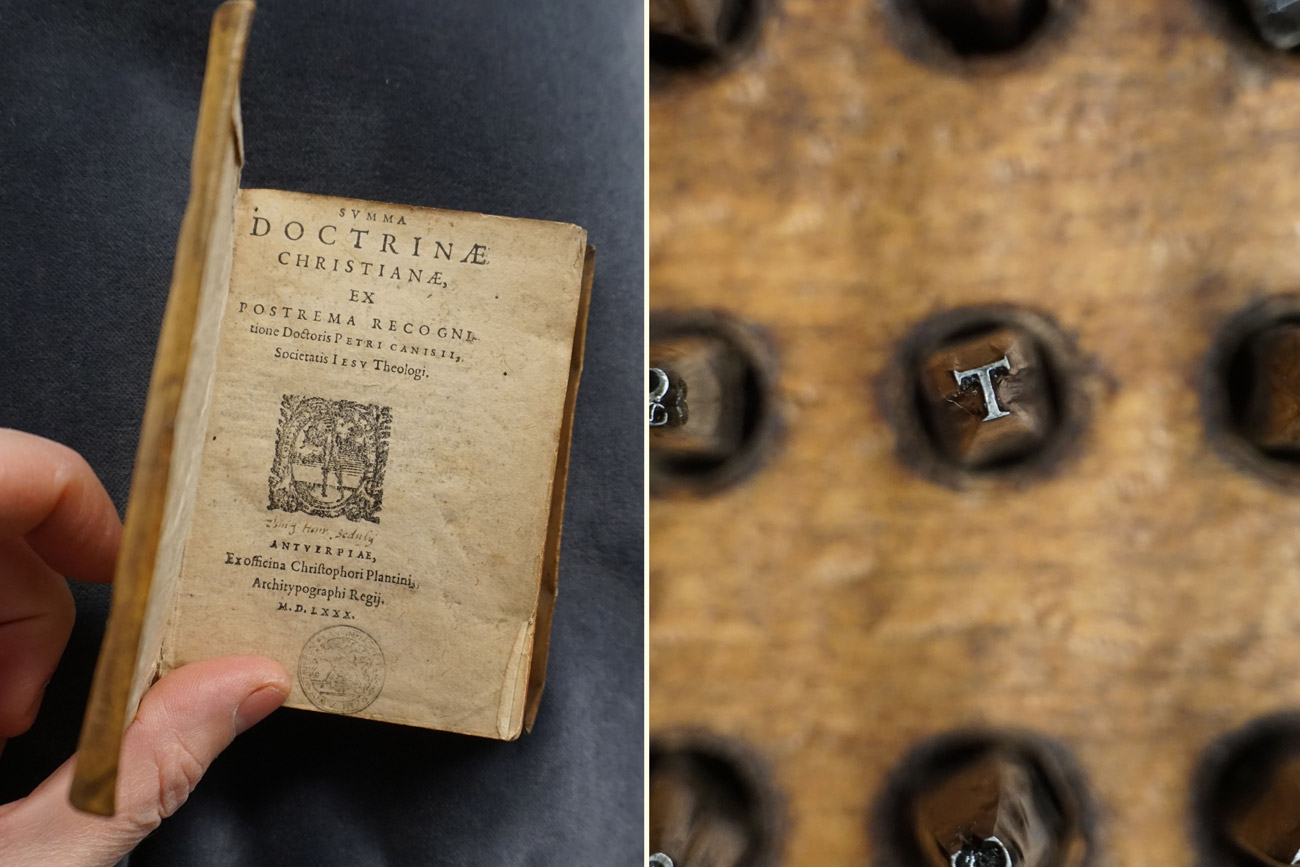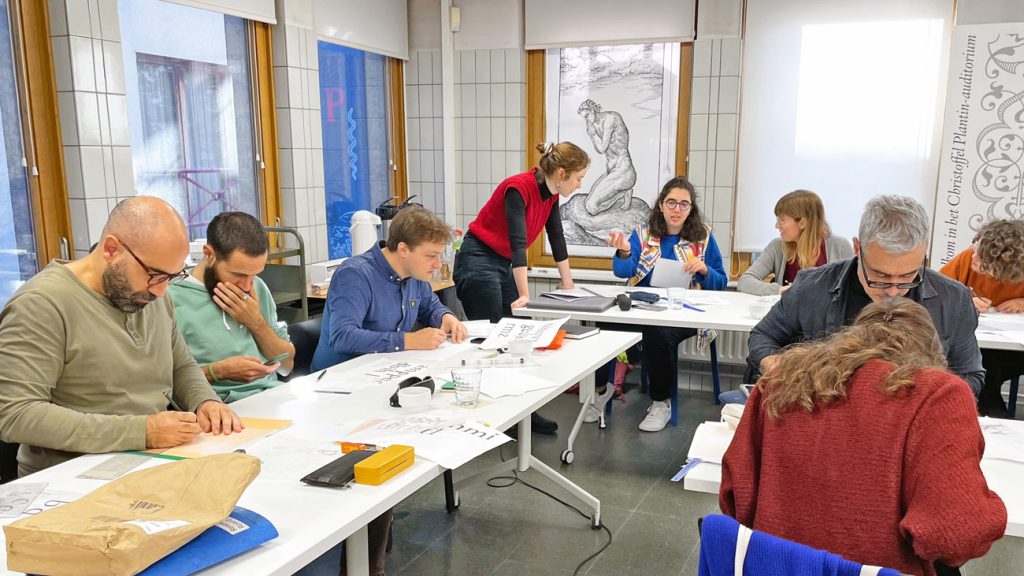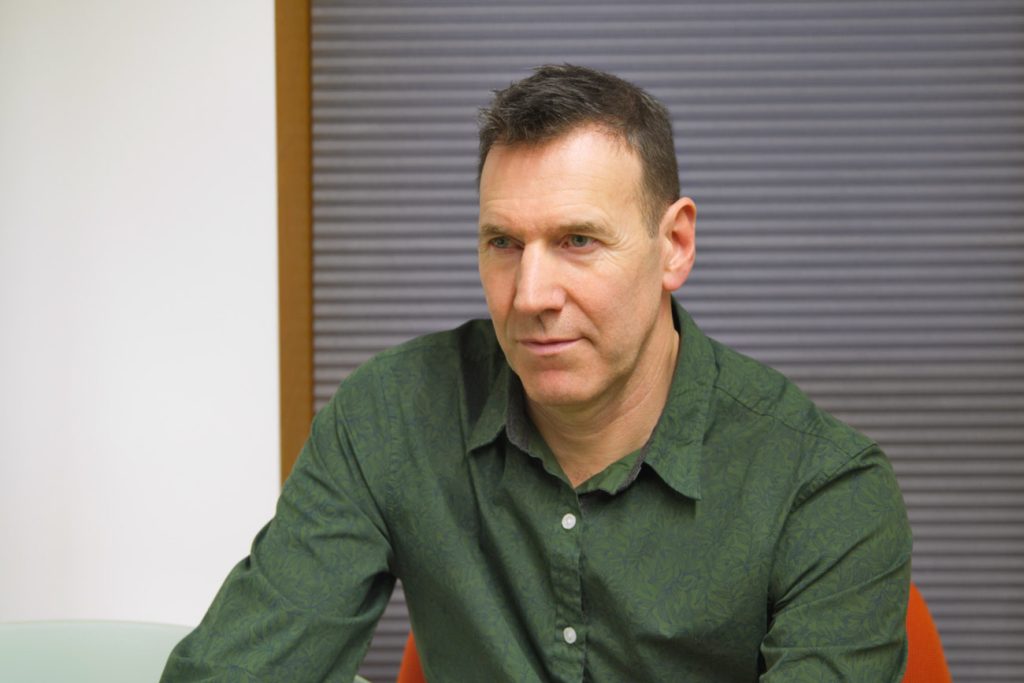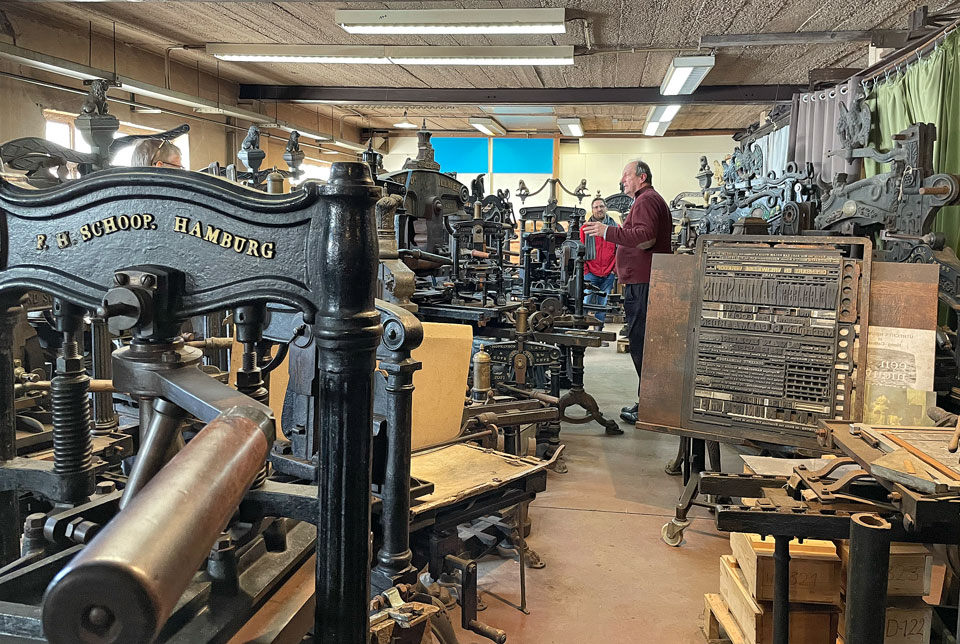
9 months
From October 2025 till May 2026
Fridays from 11 a.m. till 5 p.m. (CET).
Kick-off event: Museum Plantin-Moretus or livestreaming with Zoom. Next: everything online.
Jeremy Tankard
The Expert Class Type Design provides a comprehensive curriculum that combines lectures, discussions, and exercises guiding students through the design and production of digital typefaces. This course is taught by the British type designer Jeremy Tankard.
Principle tasks include:

The workshops are held during the Kick Off event (20–23 October 2025), an intensive and immersive four-day program in Antwerp, packed with in-person lessons, exercises, guest lectures, study visits and social activities. Experience teaches us that these intense four days are an ideal opportunity for the students to get to know each other better, and to immerse the group in the invaluable collection of the Museum Plantin-Moretus, with punches, matrices, historical prints and type specimens.
The workshops are designed to deliver, and expand on, a base typographic knowledge; introducing core concepts that will be used throughout the course.
Subjects covered:
The group project, that will be introduced during the Kick Off event, will focus on title pages found in the precious books of the MPM collection. Working in small groups you will be asked to consider a range of criteria to complete, in order to evaluate, present and discuss these in detail.
During the Expert Class we will be using the unique MPM collection to inspire the creation of fresh type designs. You will realise that type is part of a continuing history and that you have the opportunity to contribute to this. By experiencing and understanding key historical developments, technologies and typography, you will be better equipped to create fresh ideas. Our ambition is to foster in you a passion for advancing typographic design.
The subsequent online sessions, given between November and May, guide you through aspects of type design enabling you to complete the design of a typeface.
Subjects covered:
Taking the Expert Class online implies that research in the reading room of Museum Plantin-Moretus is not possible. To get around this, students will be provided with high-quality photos and scans of title pages, type specimens, punches, smoke proofs and matrices from the museum’s large collection.
Jeremy Tankard is a graduate of Central Saint Martins and the Royal College of Art. Initially working at Addison Design Consultants and then Wolff Olins, he left corporate design in order to pursue his interests in type as an independent type designer in 1998. Jeremy has designed type since the early 90s. His first typeface, Disturbance, was released through FontShop International in 1993, followed by Bliss in 1996 as part of the Agfa Creative Alliance and later by typefaces for Adobe and Microsoft.
Eclectic in inspiration and reference, Jeremy continues to design a diverse range of typefaces that aim to provide new visual textures for creative expression. While some designs are bespoke commissions, many are available for licensing through typography.net.
The compliment website studiotype.com shows brief insights into the inspiration, research and process of both the bespoke and original designs.

Monday 20 October, afternoon:
Tuesday 21 October, afternoon:
Wednesday 22 October:
Thursday 23 October:

The Expert Class is designed for graphic designers with a keen interest in typography. It will be intensive, hence ‘Expert’ in the title; but perfectly achievable and very rewarding. Students who positively complete the course obtain an officially recognized post-college certificate.
The course is highly international, attracting students from various countries. Consequently, lessons are conducted in English.
Requirements:
Calendar: A four-day Kick Off on-site in Antwerp, followed by nine online sessions.
Kick Off: Monday 20 October till Thursday 23 October 2025.
From 9.30 a.m. till 4.40 p.m.
Online lessons: Friday 14 November, 5 December and 19 December 2025.
Friday 16 January, 6 February, 27 February, 13 March, 3 April and 24 April 2026.
From 11 a.m. till 4.40 p.m.
Location: Museum Plantin-Moretus, Vrijdagmarkt 22, 2000 Antwerp, Belgium, and online via Zoom.
The reading room of the museum is open on week days from 9.30 a.m. till 4.30 p.m.
We will be organizing info sessions on 15 March, 17 May and 21 June. More info on our Open Day page.
€ 2100.
interesse
Vrijdagmarkt 22
2000 Antwerpen
België
Om de beste ervaringen te bieden, gebruiken wij technologieën zoals cookies om informatie over je apparaat op te slaan en/of te raadplegen.